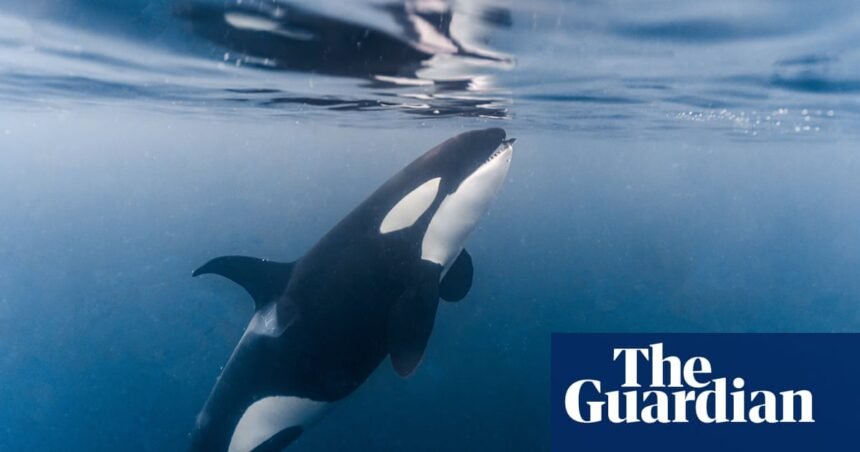Last month, a glimmer of hope emerged for the ailing southern resident killer whales of the Pacific when researchers spotted a new calf swimming alongside her mother. Prior to this, only one calf had been recorded this year, which sadly died a few months later.
However, by mid-October, the new calf, L128, appeared to be in poor health, described as “lumpy and skinny” by researchers from the Center for Whale Research, who observed an older orca carrying the infant across her snout. Another whale attempted to revive the calf by jiggling it. Field biologist Mark Malleson reported witnessing the calf take a faint breath and swim again, but her current status remains uncertain.
The plight of these critically endangered southern resident killer whales has been viewed as indicative of a broader ecosystem crisis, leading to tensions among fishermen, whale-watch companies, and the marine transport sector. A prevalent belief is that the whales are suffering from a lack of access to chinook salmon, their primary food source, which itself has seen significant decline.
A recent study from the University of British Columbia challenges this assumption, indicating that the whales actually have greater access to chinook salmon than their healthier relatives, the northern resident orcas. These new insights complicate the understanding of the factors pushing southern residents toward extinction.
Andrew Trites, co-author of the study and director of the marine mammal research unit at the university, expressed surprise at the findings, noting the need for thorough verification of data. The research, published in the journal Plos One, investigated food availability for the southern resident killer whales, a group of 73 whales ranging from southern British Columbia to California. They are divided into three pods and spend summer and fall months near Vancouver Island. The study also examined food availability for the northern resident orcas, who occupy overlapping territories.
Trites indicated that while one might expect a scarcity of prey for southern residents, the team discovered an abundance of chinook available to them, particularly after discussions with sport fishers and whale-watch operators. The issue is not about access to food in the Salish Sea, but rather the availability of prey throughout the year, particularly in winter and spring, when southern residents might face food shortages.
Despite the better availability of prey, Trites warned that it does not directly translate to accessibility for the whales. Marine traffic noise can disrupt orca communication and hinder their hunting capabilities. Increased vessel encounters in the Salish Sea could mean that even though chinook stocks are high, the southern residents may struggle more than northern residents to access this food.
Environmental organizations have expressed concern about the rising ship traffic along the British Columbia coast, particularly with the ongoing construction of the Trans Mountain oil pipeline and the operation of a liquefied natural gas terminal.
Trites noted that the southern resident killer whales face more shipping traffic and uncertainty regarding their ability to adapt. Their population has remained relatively unchanged for over fifty years, declining from an estimated 200 at the beginning of the 20th century.
Much of this decline can be traced back to the early 1900s when whales, often referred to as “blackfish” by fishermen, faced mass killings and captures for aquariums. It wasn’t until the 1970s that Canada prohibited the capture of orcas, allowing for some recovery.
Interestingly, other marine mammals in the Salish Sea have seen population rebounds, with increases in harp seals, sea lions, and porpoises, making the plight of the southern resident killer whales an anomaly. Trites emphasized the need to understand whether there are intrinsic challenges for these whales or if environmental conditions in the Salish Sea are contributing to their struggles.





